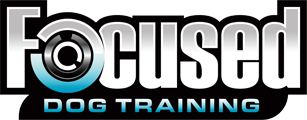Introduction to optimizing your dog training schedule for quicker results
To get quick results from your dog training schedule, simplicity and consistency are key. Start by setting realistic goals. Think about what you want your dog to learn and break it down into manageable tasks. This could be as simple as sitting on command or as complex as retrieving specific items. Whatever the goal, your plan needs to be clear to both you and your dog.
Train in short, focused sessions. Dogs have short attention spans, so training sessions that last 10 to 20 minutes are ideal. This keeps learning fun and prevents both of you from getting frustrated.
Consistency is your best friend here. Train at the same time each day. This helps set a routine, making it easier for your dog to know when it’s time to focus. Use the same words and commands for each action you’re teaching. Mixing commands can confuse your dog, slowing down progress.
Remember, every dog learns at its own pace. Celebrate the small victories and be patient. With a clear, consistent, and simple approach, you’ll see quicker results in your dog’s training.
Understanding your dog’s learning style
Just like people, each dog has its own way of learning. Some dogs might pick up tricks quickly just by watching, while another might need a bit of practice. Figuring out your dog’s learning style will make your training go much smoother. First off, observe if your dog is more motivated by treats, praise, toys, or maybe a mix. This tells you what reward system will work best. Next, watch how your dog responds to commands. Does he get it right after a couple of tries, or does it take a bit longer? Some dogs are visual learners and do better with hand signals, while others might respond better to verbal commands. Stay patient and keep sessions short. Dogs, like us, can only focus for so long. Lastly, always end on a positive note. This encourages your dog to look forward to the next session. Understanding these aspects of your dog’s learning style will not only speed up the training process but also strengthen your bond.
The essentials of an effective dog training schedule
To see fast results, your dog training schedule should be short, consistent, and fun. Dogs learn best in short 10-20 minute sessions. Trying to push longer can tire both you and your buddy out, and that’s not the goal. Consistency is key. Training at the same time every day helps your dog know when it’s time to focus. Like us, dogs thrive on routine. Make every session a mix of challenge and play. This keeps your dog interested and eager to learn. Always end on a positive note, so your dog associates training with good times. Remember, patience and positivity move mountains in dog training.
Morning routines: Starting the day off right
Kicking off your day with a structured morning routine can significantly increase the success rate of your dog training efforts. Early mornings are usually calm, offering fewer distractions, setting the perfect scene for focused training sessions. Aim to start the routine right after your dog has had a chance to relieve themselves. A simple yet effective morning training routine might include a quick review of basic commands like “sit,” “stay,” or “come.” Use positive reinforcement to reward correct behaviors, such as treats or enthusiastic praise. This not only helps in reinforcing learned behaviors but also strengthens your bond. Remember, consistency is key. By integrating training into your daily morning routine, your dog will quickly learn what is expected, leading to faster and more effective training results. Plus, it’s a great way for both of you to start the day on a positive note.
Incorporating training into playtime and walks
Getting your dog to learn quickly doesn’t mean you need to set aside large blocks of time solely for training. In fact, incorporating training into playtime and walks can lead to faster, more effective results. Here’s why: dogs learn best when they’re having fun. Think about it. During playtime, your dog’s energy levels are up, they’re engaged, and their attention span is at its peak. This is the perfect time to slip in some training. Simple commands like sit, stay, or come can be integrated into fetching games or tug-of-war. Reward them with their favorite toy or treat when they follow through. Likewise, walks are opportunities for leash training, practicing patience, and learning to ignore distractions. Instead of just letting your pooch sniff around, use this time to work on heel commands or stopping before crossing the street. By mixing training with play and daily walks, your dog learns that following commands is part of their everyday fun. This makes them more likely to respond positively and retain what they’ve learned. Remember, consistency is key. Use the same commands and rewards during playtime and walks. This repetition reinforces learning without the need for formal training sessions. Your dog won’t even realize they’re in “school” – they’ll just think they’re having a great time with their favorite human.
Utilizing short, focused training sessions
For fast results in dog training, think short and sweet. Aim for training sessions that are around 5 to 15 minutes long. Dogs, like humans, can’t focus for too long, so it’s all about making the most of their short attention span. Work on one command at a time and keep things positive. Reward your dog immediately after they do something right. This makes them more likely to remember and repeat the behavior. Also, train in a quiet spot without distractions; you want your dog’s full attention. By keeping sessions brief but consistent, you’ll see improvements much quicker. Remember, patience and consistency are key—don’t expect miracles overnight.
The importance of consistency in your dog training schedule
When it comes to training your dog, sticking to a regular schedule is key. Imagine you’re learning a new skill. If you practice it at the same time every day, you’re going to get the hang of it much faster, right? It’s the same with dogs. They thrive on routine and predictability. Consistent training sessions signal to your dog that it’s time to focus and learn. This doesn’t mean you need to spend hours each day; even short, daily sessions can lead to significant progress. The magic is in the regularity, not the duration.
Failing to keep a consistent schedule can confuse your pooch and slow down their learning. If one day you train in the morning and the next day it’s at night, your dog might not be in the right mindset to learn. Think about it as setting a regular mealtime; your dog knows when it’s time to eat, so they’ll also know when it’s time to train. This helps build a strong bond between you and your dog and makes training not just a task, but a part of their daily life. Remember, consistency is king. Stick to your schedule, and you’ll see faster, more effective results.
Adjusting the training schedule according to your dog’s progress
Watching your dog’s progress and adapting the training schedule is key for fast results. This means if your dog is picking up commands quickly, you might want to introduce new commands sooner than you planned. On the other hand, if your dog is struggling, it’s okay to slow down, repeat exercises, and give them more time to catch on. Remember, every dog learns at their own pace. It’s important to celebrate the small wins and not rush the process. Consistency is crucial. Try to keep training sessions short but regular, ideally 5 to 10 minutes a day. Focus on one command at a time until your dog has it down pat, then move on. Use lots of praise and treats to encourage them. By being flexible and attentive to your dog’s learning speed, you’ll see improvements much faster. Stay patient, and adjust the plan as needed—it’s all about finding what works best for your furry friend.
Common pitfalls to avoid for maintaining fast training results
In dog training, seeing fast results can be gratifying, but it’s easy to fall into traps that slow your progress. First, inconsistency is a big no-no. Training your dog only now and then confuses them. Stick to a routine; dogs thrive on predictability. Next, skipping the basics can lead to trouble. Rushing into complex commands before mastering simple ones like ‘sit’ and ‘stay’ can overwhelm your dog. Also, using too much verbal communication can be confusing for dogs. They understand your tone and body language better than a flood of words. Remember, rewards work better than punishment. Positive reinforcement, like treats or praise, helps your dog learn what you want faster than scolding them for what you don’t want. Lastly, assuming one size fits all in dog training is a mistake. Each dog is unique; what works for one may not work for another. Pay attention to your dog’s cues and adjust your training approach accordingly. Steering clear of these pitfalls can help maintain the pace of your dog’s learning and keep those results coming fast.
Conclusion: Patience, persistence, and progress in dog training
To wrap it up, remember three key ingredients for successful dog training: patience, persistence, and progress. It’s not about racing to the finish line; it’s about consistent effort and understanding your dog’s pace. Each dog learns differently, so what works for one might not work for another. Be patient with your furry friend, keep at it even when it feels like you’re not making headway, and celebrate the small victories. Those little moments of progress add up to big achievements over time. Keep in mind, a well-trained dog isn’t just about commands obeyed but a solid bond of trust and understanding between you and your dog. Keep these principles at the heart of your training routine, and you’ll see the results you’re aiming for.


